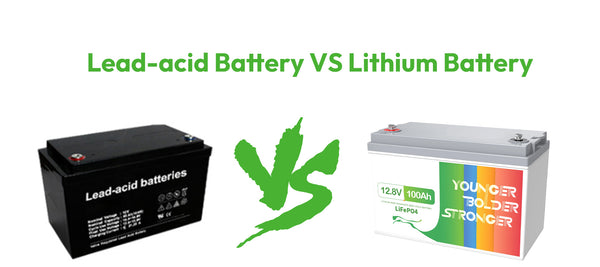What is the Difference Between a Lithium Battery and a LiFePO4 Battery?
In the realm of rechargeable batteries, lithium batteries and LiFePO4 batteries occupy prominent positions, each offering unique advantages for specific applications. Understanding the fundamental differences between these two types of batteries is crucial for making informed decisions when selecting the most suitable power source for your needs.
Lithium Battery Overview
Lithium batteries, commonly referred to as lithium-ion batteries, are a type of rechargeable battery that utilizes lithium ions as the primary charge carriers. These batteries are renowned for their high energy density, which translates into longer runtimes for electronic devices. Lithium batteries are widely used in consumer electronics such as smartphones, laptops, and tablets due to their compact size and lightweight nature. However, they are also known for their potential safety hazards, such as thermal runaway and fire, if not handled or charged properly.
LiFePO4 Battery Overview
LiFePO4 batteries, on the other hand, are a subtype of lithium-ion batteries that use lithium iron phosphate as the cathode material. This chemistry offers several advantages, including improved safety, longer cycle life, and better tolerance to high temperatures. LiFePO4 batteries are often used in applications that require a high degree of reliability and safety, such as electric vehicles, solar energy storage systems, and industrial equipment.

The main differences between the two batteries
Energy Density
Lithium batteries generally have a higher energy density than LiFePO4 batteries, meaning they can store more energy per unit weight or volume. This allows lithium batteries to power devices for longer periods before requiring a recharge.
Safety
LFP batteries are considered safer than traditional lithium batteries due to their inherent stability. The lithium iron phosphate chemistry is less prone to thermal runaway and is less likely to catch fire or explode under adverse conditions.
Cycle Life
LiFePO4 batteries tend to have a longer cycle life, meaning they can be charged and discharged more times without significant capacity degradation. This is particularly beneficial for applications that require frequent charging and discharging, such as electric vehicles.
Cost
Lithium batteries are often cheaper to produce than LiFePO4 batteries due to the widespread availability of lithium and the established manufacturing processes. However, the cost difference may vary depending on market conditions and specific applications.
Charge Rate
LFP batteries typically have a slower charge rate compared to some lithium batteries. This means they may take longer to reach a full charge, but they can also handle deeper discharges without damaging the battery.
In conclusion, both lithium batteries and LiFePO4 batteries have their unique advantages and disadvantages. The choice between them depends on the specific requirements of the application, including energy needs, safety concerns, cycle life requirements, and budget constraints. Understanding these differences can help you make an informed decision when selecting the most suitable battery type for your project or device.
























